7 Logarithmic Notation (Theory)
1/25
There's no tags or description
Looks like no tags are added yet.
Name | Mastery | Learn | Test | Matching | Spaced |
|---|
No study sessions yet.
26 Terms
Basic Graph Shape of Logarithmic Functions when a > 1
Inverses of exponential graphs
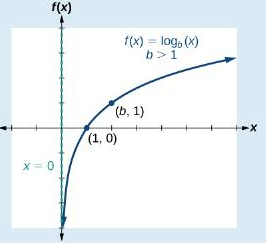
Basic Graph Shape of Logarithmic Functions 0 < a < 1
Inverses of exponential graphs
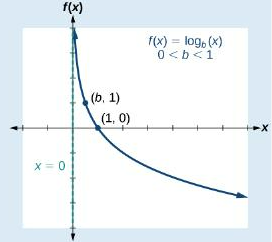
Parts of a Logarithmic Function
b - base
y - argument
x - power
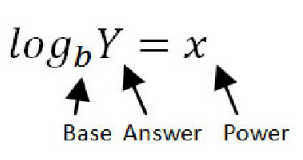
Translating Logs to Exponentials
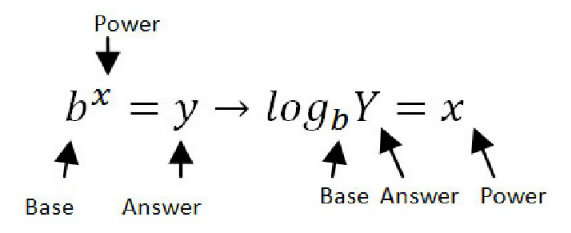
Exponentials solve ______
Logarithms
Logarithms solve ______
Exponentials
Solving Logarithms
Step 1: Translate logarithm into an exponential
Step 2: Solve for x
How to Find the Inverse of Exponentials
Step 1: Write function in terms of y, substitute f(x) = y
Step 2: Switch x’s and y’s
Step 3: Solve for x in terms of y
Step 4: Write the exponential as a logarithm
Step 5: Rename y to f -1(x) = loga (x)
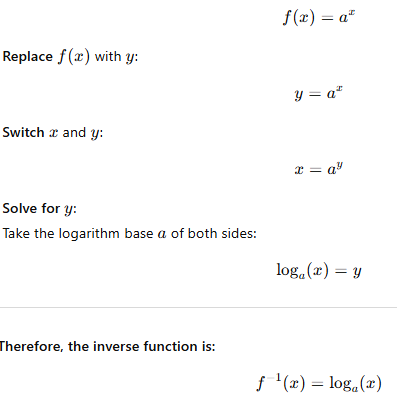
Basic Graph Shape of Logarithmic Functions when a > 1 (Vertical Asymptote, Domain, Range, Key Points)
(1) Vertical Asymptote: x = 0
(2) Domain: (0, ∞)
(3) Range: (−∞, ∞)
(4) Key Points: (1, 0) and (a, 1)
Basic Graph Shape of Logarithmic Functions when 0 < a < 1 (Vertical Asymptote, Domain, Range, Key Points)
(1) Vertical Asymptote: x = 0
(2) Domain: (0, ∞)
(3) Range: (−∞, ∞)
(4) Key Points: (1, 0) and (a, 1)
Domain of Logarithms
argument > 0
can never be negatives, or equal to zero
Steps to Graphing Logarithmic Functions
Step 1: In order
Step 2: Key points
(1, 0) — inverse of exponential key points
(a, 1) — inverse of exponential key points
Step 3: Identify if a > 1, or if a < 1; predict the shape of your function whether it is always increasing or always decreasing
Step 4: Shifts
Horizontal shift
Vertical shift
Negatives (affect outputs of key points)
Constants (affect outputs of key points)
Step 5: T-Table to find true values
Use t-table
Pick points, plug into log, evaluate, and find true values
Product Property of Logarithms

Quotient Property of Logarithms

2n Quotient Property of Logarithms

Power Property of Logarithms

Zero Property of Logarithms
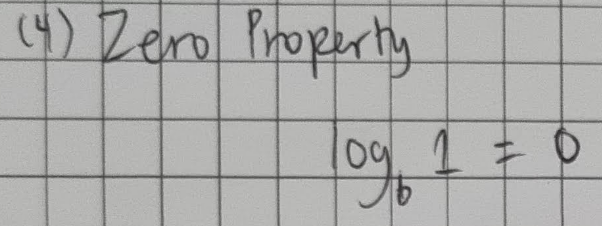
Identity Property of Logarithms

Inverse Property of Logarithms
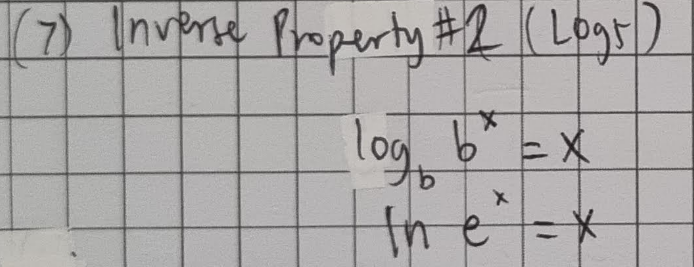
Inverse Property of Exponents

Common Logarithms
(1) logs with a base of 10

Natural Logarithms
(1) logs with a base of e
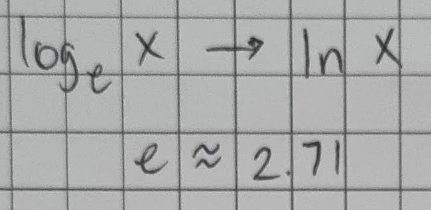
Change of Base Formula
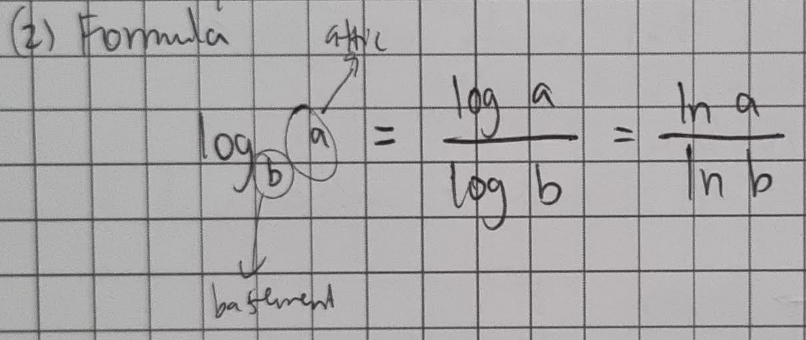
How does change of base work?
(1) allows you to change any log of any base into a base you want to work with
Solving Exponential and Logarithmic Equations — Exponential Form
Step 1: Simplify equation such that you have a power raised to a variable equal to a number (bx = y)
Step 2: Check for common bases
Step 3: Take the common log of both sides
Step 4: Use the power property to move the exponent to the front of the logarithm
Step 5: Isolate the variable and solve for x
Solving Exponential and Logarithmic Equations — Logarithmic Form
Step 1: Simplify logs together to write as one log
Step 2: Convert logs to exponential
Step 3: Solve
negative logs do not exist